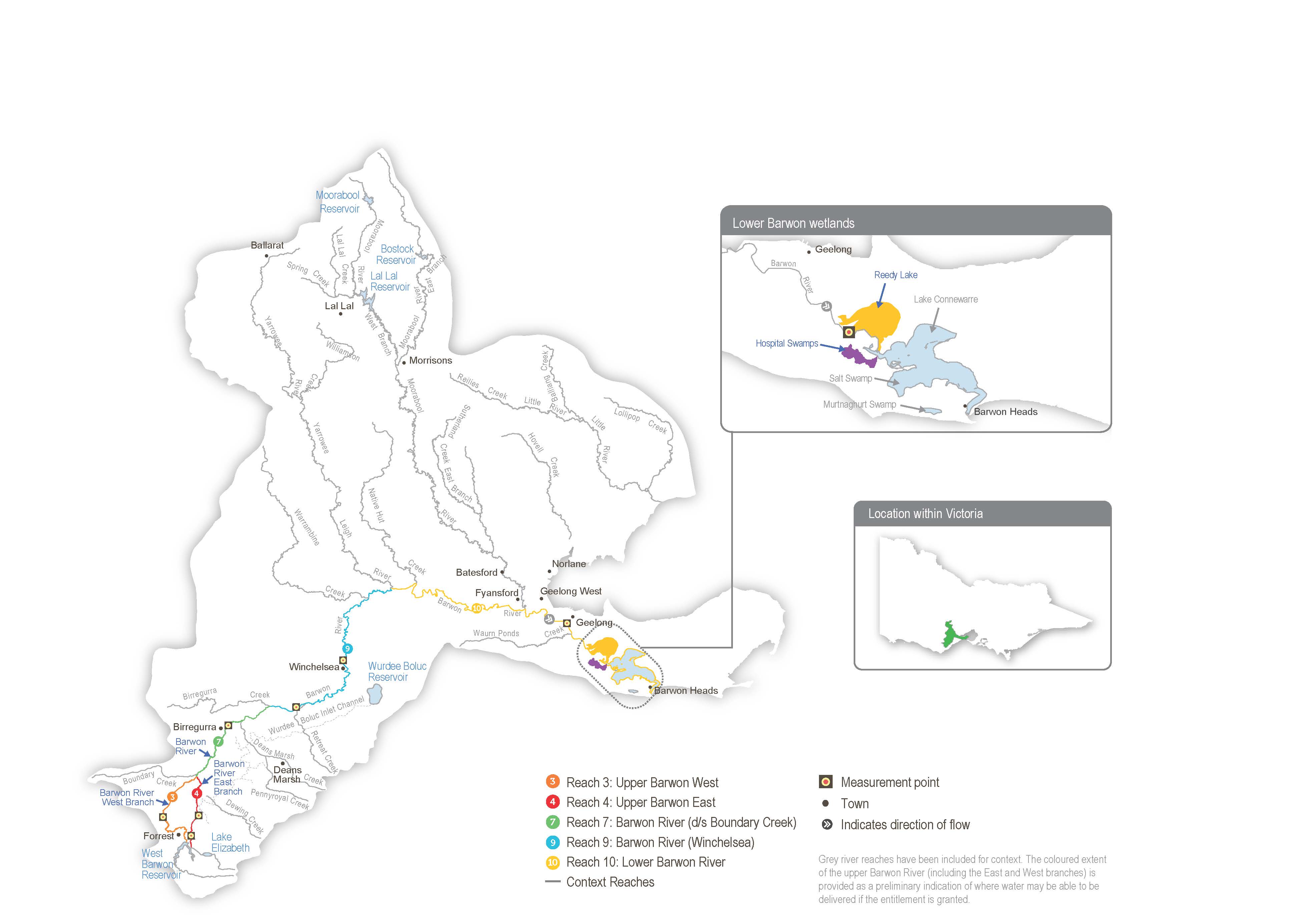On this page:
Latest information about where, when and why environmental water may be delivered to the lower Barwon wetlands and the environmental objectives being targeted is available in this year’s seasonal watering plan.
The seasonal watering plan also contains information about how environmental flows could support cultural, social, recreational and economic values in the lower Barwon wetlands.
Watering data for the lower Barwon wetlands and the wider central region is updated quarterly. Visit current watering releases to find out more.
To find out the current environmental water entitlements held by the VEWH in the lower Barwon wetlands visit our water holdings.
Information about the ownership of water entitlements in the lower Barwon wetlands can be found under the Entitlements and Compliance section of the Barwon basin page at Victorian Water Accounts.
Waterway manager
Corangamite Catchment Management Authority
Storage manager
Environmental Water Holder
Victorian Environmental Water Holder
Traditional Owners
Wadawurrung Traditional Owners Aboriginal Corporation - statutory authority for the management of Aboriginal heritage values and culture, under the Victorian Aboriginal Heritage Act 2006.
System overview
The estuarine reach of the Barwon River contains a system of wetlands and lakes, including Lake Connewarre, Reedy Lake and Hospital Swamps, Salt Swamp and Murtnaghurt Lagoon. For thousands of years, the system has been a place of great significance to the Wadawurrung Traditional Owners. Paleert Tjaara Dja Let’s make Country good together 2020-2030 Wadawurrung Country Plan acknowledges the system’s special place in their Dreaming.
Water for the environment can be used to manage water levels in Reedy Lake and Hospital Swamps, which connect to the Barwon River. The environmental entitlement for the lower Barwon wetlands does not provide access to water held in storage. Instead, it allows water to be diverted from the Barwon River into Reedy Lake and Hospital Swamps when river levels are above 0.7 m AHD. High water levels in the Barwon River can also result in the natural wetting of the wetlands.
Environmental values
Reedy Lake and Hospital Swamps form part of the internationally recognised Port Phillip Bay (Western Shoreline) and Bellarine Peninsula Ramsar site, which is used by many thousands of migratory birds from around the world. The wetlands support 47 known threatened plant and animal species and communities. These include some of Victoria’s rarest species (such as the brolga, orange-bellied parrot, Australasian bittern, growling grass frog, Australian grayling, and dwarf galaxias) and subtropical and temperate coastal saltmarsh communities. Reedy Lake also supports a range of vegetation communities, including coastal saltmarsh, herbfields and reed beds.
Reedy Lake was naturally a partly ephemeral system, but river regulation meant the lake was nearly permanently wet from the 1970s until 2016. Wetting and drying regimes are now recommended to maintain the lake’s ecological character and diverse habitats.
Following a four-year (2016-17 to 2019-20) watering regime trial at Reedy Lake, the Lower Barwon Review in 2020 proposed to implement a long-term, seasonally adaptive water regime that avoids complete drying. At Reedy Lake, this means having the wetland full for a quarter of all years and having a partial drawdown in summer and autumn in three-quarters of all years.
Hospital Swamps comprises five wetland basins that support important ecological processes and significant environmental values, including large areas of threatened coastal saltmarsh and diverse waterbird communities. Hospital Swamps has retained a more natural wetting and drying pattern. As a result, the swamp’s vegetation community has remained essentially unchanged since the 1980s.
Page last updated: 01/05/25
